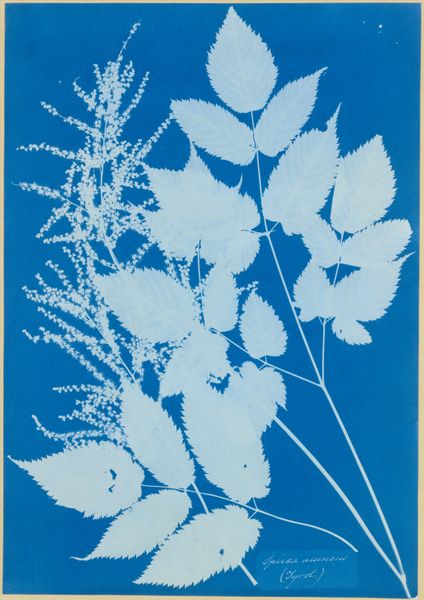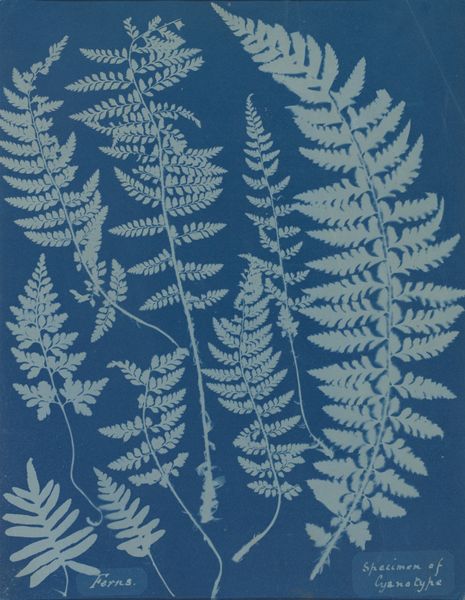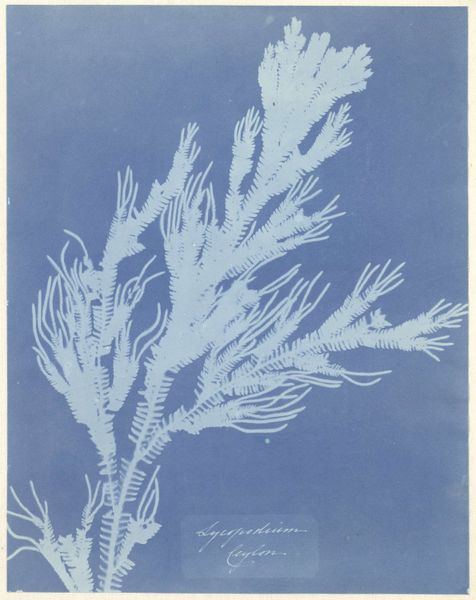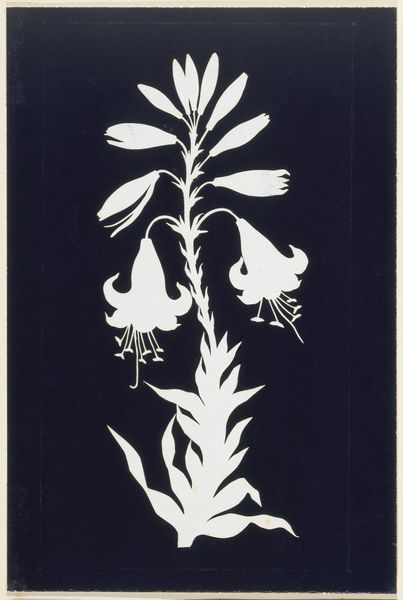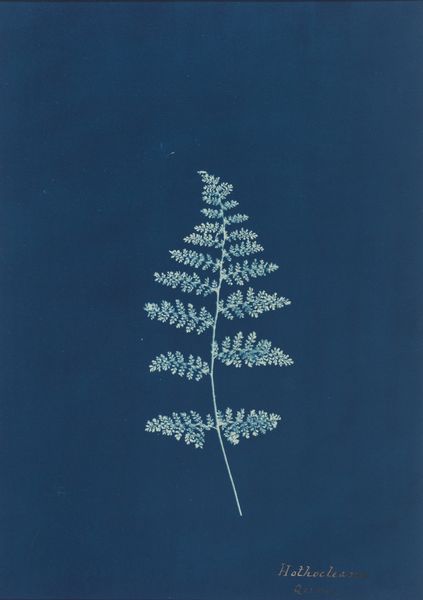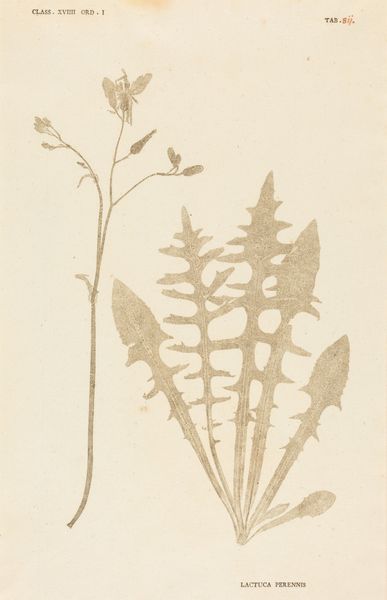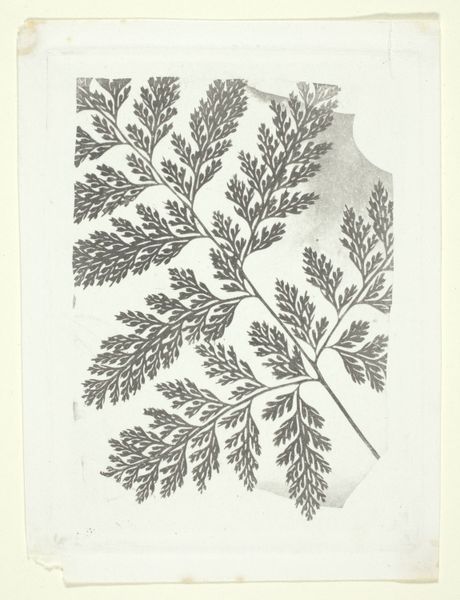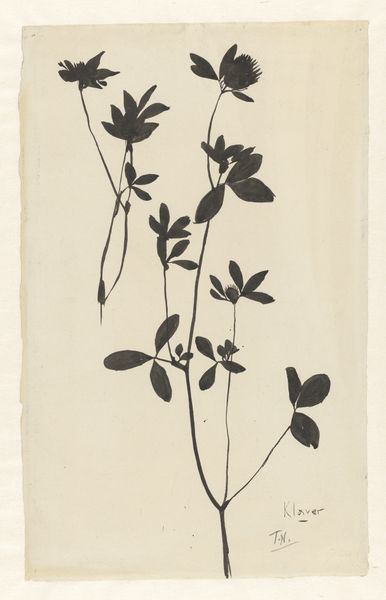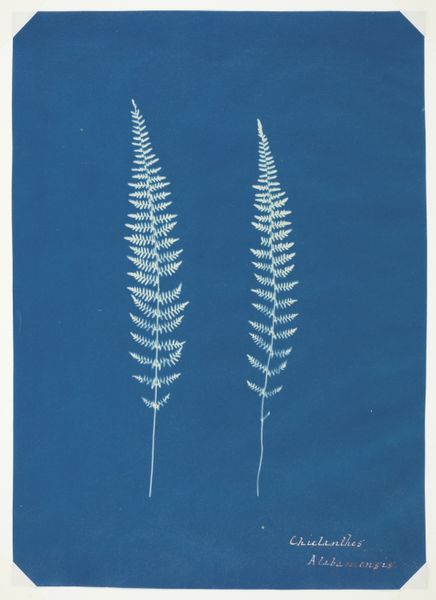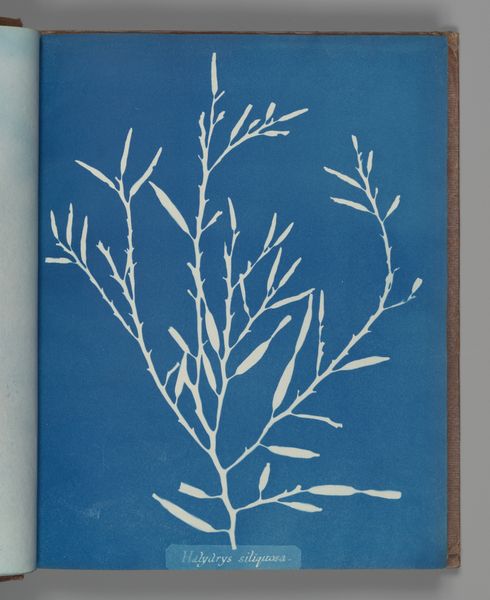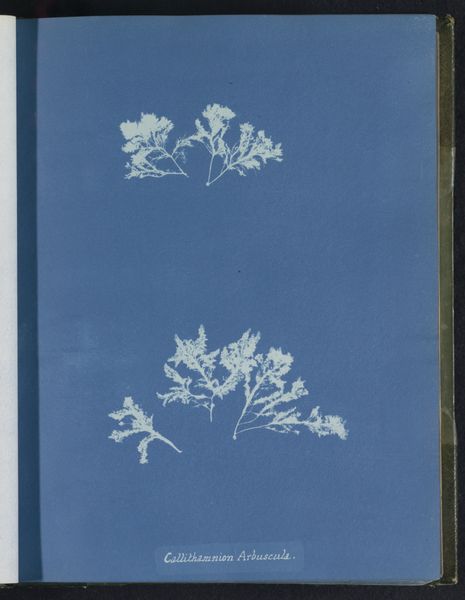
cyanotype, photography
#
still-life-photography
#
cyanotype
#
photography
Dimensions: height 247 mm, width 193 mm
Copyright: Rijks Museum: Open Domain
Editor: So, here we have Anna Atkin’s “Zeestreepvaren” from around 1854. It’s a cyanotype, so essentially a photograph. I'm immediately drawn to the ghostly, almost ethereal quality of the white ferns against that vibrant blue. It feels both scientific and strangely poetic. How do you interpret this work? Curator: I see it as a radical act of claiming space in a patriarchal society. Think about it: mid-19th century, the rise of scientific exploration was largely a male domain. Atkins, by using photography – a relatively new medium – to document botanical specimens, directly intervenes in the world of scientific documentation, making knowledge accessible while carving a path for herself. What do you make of her choice of cyanotype, given photography was rapidly evolving at the time? Editor: It's a really interesting point. Maybe the simplicity of the cyanotype process—requiring sunlight and relatively few chemicals—offered her a greater degree of independence and control. Curator: Exactly. This artistic choice empowers her. But it's not just about access. The cyanotype's distinctive blue also evokes the maritime environment, drawing attention to the vital, but often unseen, contributions of women in marine biology and coastal communities. This can be read as an assertion of their connection to, and knowledge of, the natural world. We need to appreciate how women during her era were defining what science meant, for all of us. Editor: I never thought about the sea connection so explicitly! So, the blue becomes less of an aesthetic choice and more of a commentary? Curator: Precisely. It's a multi-layered statement. It connects us to the legacy of female knowledge and disrupts conventional visual languages that historically excluded those perspectives. It challenges what we view as progress, as this is as much science as it is herstory. Editor: That really reframes how I see the image. Thanks! I will never see just plants when gazing at this cyanotype ever again. Curator: It highlights the importance of considering the broader historical context to enrich our reading of this image and female ambition and contribution through all eras.
Comments
No comments
Be the first to comment and join the conversation on the ultimate creative platform.
